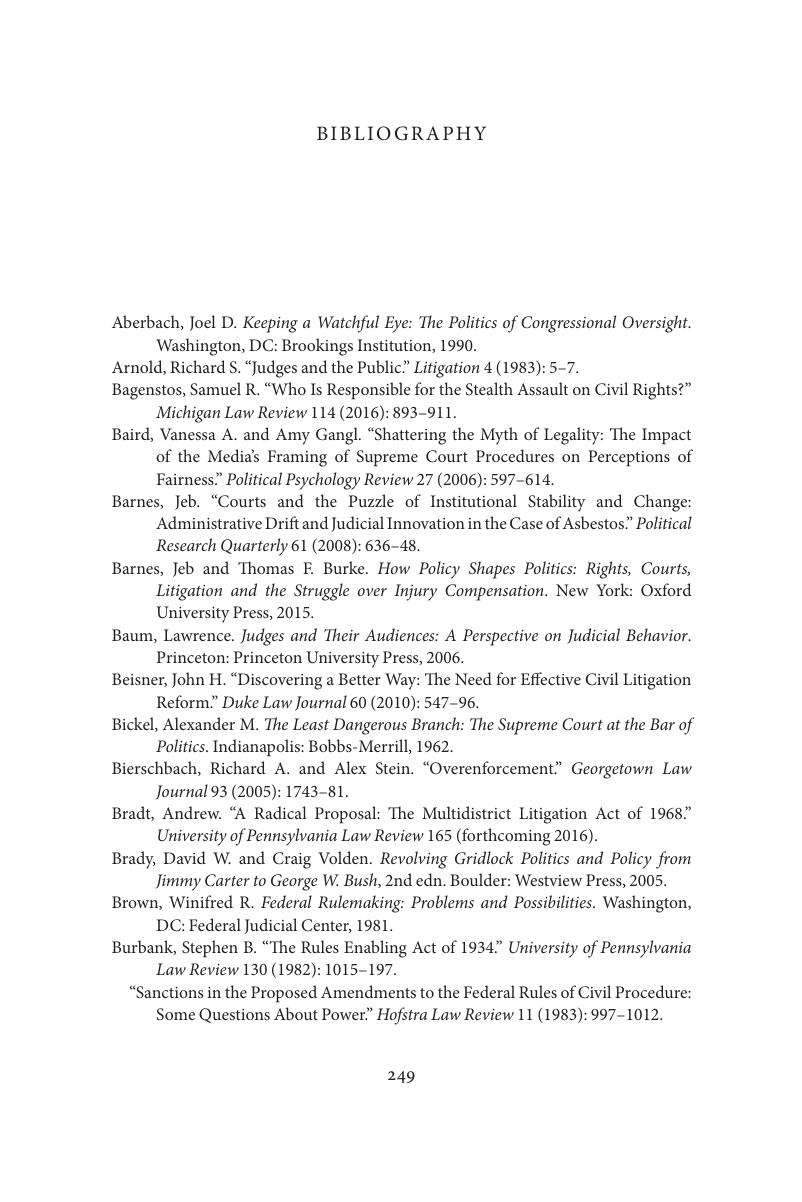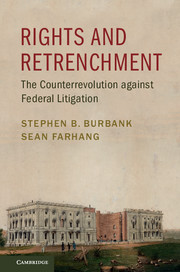Book contents
- Rights and Retrenchment
- Rights and Retrenchment
- Copyright page
- Dedication
- Contents
- Figures
- Tables
- Preface and Acknowledgments
- Table of Cases
- 1 Retrenching Rights in Institutional Context: Constraints and Opportunities
- 2 Legislative Counterrevolution: Emergence, Growth, and Disappointment
- 3 Rulemaking Counterrevolution: Birth, Reaction, and Struggle
- 4 Counterrevolution in the Supreme Court: Succeeding through Interpretation
- 5 Subterranean Counterrevolution: The Supreme Court, the Media, and Public Opinion
- 6 Rights, Retrenchment, and Democratic Governance
- Bibliography
- Index
- References
Bibliography
Published online by Cambridge University Press: 05 May 2017
- Rights and Retrenchment
- Rights and Retrenchment
- Copyright page
- Dedication
- Contents
- Figures
- Tables
- Preface and Acknowledgments
- Table of Cases
- 1 Retrenching Rights in Institutional Context: Constraints and Opportunities
- 2 Legislative Counterrevolution: Emergence, Growth, and Disappointment
- 3 Rulemaking Counterrevolution: Birth, Reaction, and Struggle
- 4 Counterrevolution in the Supreme Court: Succeeding through Interpretation
- 5 Subterranean Counterrevolution: The Supreme Court, the Media, and Public Opinion
- 6 Rights, Retrenchment, and Democratic Governance
- Bibliography
- Index
- References
Summary

- Type
- Chapter
- Information
- Rights and RetrenchmentThe Counterrevolution against Federal Litigation, pp. 249 - 266Publisher: Cambridge University PressPrint publication year: 2017



